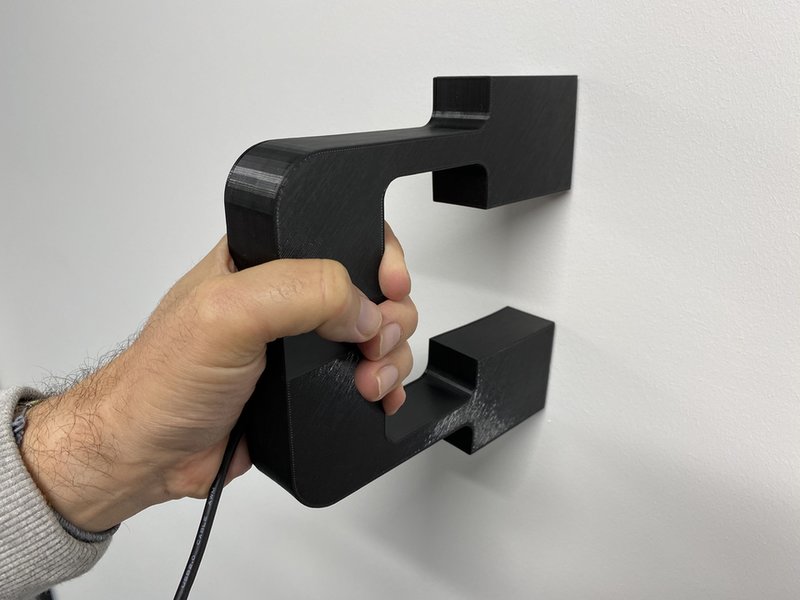Equipment
Sense through the wall: from medical tech to military tool
Initially created for remote monitoring in the medical sector, Iceni Labs’ SafeScan system employs ultra-wideband radar to help users identify individuals through opaque structures for increased situational awareness. Julian Turner finds out more from Iceni Labs CCO Alex Giles.

// Alex Giles, CCO at Iceni Labs
Julian Turner:
What is the SafeScan system?
Alex Giles:
SafeScan applies technology developed for the medical sector to remotely monitor patient respiratory rates. In December, Iceni Labs was awarded Innovate UK funding to put this medical variant through a six-month Covid-19 patient monitoring clinical trial, starting in early 2021.
In the defence space, SafeScan employs ultra wide-band (UWB) radar and will give users the ability to identify individuals in real time through opaque structures such as walls and doors without having to physically penetrate a structure with personnel or surveillance equipment.
UWB radar systems transmit signals across a much wider frequency and are usually very difficult to detect. Having traditionally been used to detect barriers and concealed objects, there is currently a lot of interesting research into their capabilities as a highly jam-resistant communications system.
Developed with support from UK Defence and Security Accelerator (DASA) funding, this ‘sense-through-the-wall’ device can be used to support small unit teams operating in dense, highly contested and urban environments, as well as counter-terror and special operations forces.
What benefits does SafeScan offer military users in terms of situational awareness, lethality and survivability compared with existing technologies?
In an operational context, SafeScan has the potential to increase situational awareness during special reconnaissance and counter-terror missions, helping operators to better understand their environment and thus measure risk more effectively and shorten decision-making timescales.
Compared with other technologies that are designed to provide a similar capability, SafeScan is a handheld system that measures approximately 20cm x 20cm and weighs in at less than 1.5lbs. Iceni Labs has reduced the system’s size, weight and power to such a degree that it can slot into reconnaissance toolkits without adding to the logistical or cognitive burden of dismounted teams.
We developed the system to fill a well-documented capability gap that has arisen across the urban warfare battlefield over the past decade, where small teams clearing buildings became a significant target for enemy forces. While the technology behind SafeScan is not unique, Iceni Labs believes is it the first to get the system into a format that can have practical application in today’s battlefield.

// SafeScan employs UWB radar to enable operators to identify individuals through opaque structures. Credit (all images): Iceni Labs
What is Team Tercio and how did its collaborative project with Iceni Labs lead to the award-winning DUELIST Situational Awareness for Small Units solution?
Team Tercio is a UK-US industry team integrating data visualisation, sensor and user interface technologies into a software platform that can build an integrated visual representation of the dismounted battlespace for small unit manoeuvre elements. This gives warfighters real-time situational awareness in urban environments and supports ground commander decision-making.
SafeScan was identified as a perfect fit for the Team Tercio DUELIST Situational Awareness for Small Units solution. In November, DUELIST triumphed in the National Security Innovation Network’s (NSIN’s) Situational Awareness in Dense Urban Environments 2020 Online Challenge, which asked teams to develop novel sensing concepts that support ground teams in urban environments.
Specifically, the NSIN was looking for a system capable of collecting data about an interior space, transmitting it to emergency responders and C2 elements, interpreting the data, and presenting actionable information in an intuitive manner to the operator in a timeframe of minutes to hours.
The Team Tercio DUELIST solution directly supports these operational requirements by fusing the output of a variety of sensors (including SafeScan) with inertial measurement unit motion detection and occupancy mapping technologies to build a 3D volumetric local map of the user’s track and local environment. The NSIN win secures ongoing development funding for the Team Tercio solution.
How has Covid-19 impacted Iceni Labs’ work, and that of the defence sector as a whole?
We have bucked the trend of Covid-19 in 2020, with business continuing to grow throughout. Our footprint has actually increased since the beginning of the year, with our new office opening in Boston, MA, in November to support the US side of our business, and our growth creating new roles in London and Dundee.
Iceni Labs was founded in 2013 by a team of physicists, scientists and defence specialists with the goal of developing science and technologies that fill capability gaps for greater human security.
We continue to identify appropriate investment streams – primarily from local, national and international innovation grants – to accelerate the movement of novel ideas into technological solutions that attract commercial investment. This approach allows the company to both maximise value for inventors and provided substantially de-risked opportunities for our investors.
We are encouraged by the recent MoD commitment to supporting fundamental science research and development, and by the latest budget increase. It is also exciting to see further UK/US research cooperation as indicated by the opening of the Office of Navy Research London Tech Bridge.
Are you able to talk about two UK DASA-funded projects that Iceni Labs is working on to develop cutting-edge acoustic microphone and thermal weapon sight technologies?
We are limited as to what we can say about both of these projects at present. However, I will say that they are ultra-high-tech and offer game-changing capabilities to end users. Both of the projects are in the prototype phase and are to be delivered for testing in 2021–22.
SafeScan has attracted the attention of a number of military forces. It is undergoing trials and user feedback by UK small unit teams, with production set to begin in 2021. Trials with potential international users including the US, France and Australia are set to commence in early 2021.
// Main image: The DUELIST solution builds a 3D volumetric local map of the user’s track and local environment. Credit (all images): Iceni Labs
Alex Giles is CCO at Iceni Labs, which partners with academics, researchers, commercial experts and investors to take early-stage technology from lab to market across the defence, security and medical technology industries. Here, he tells us about the defence applications of the SafeScan system, originally developed for the medical sector.